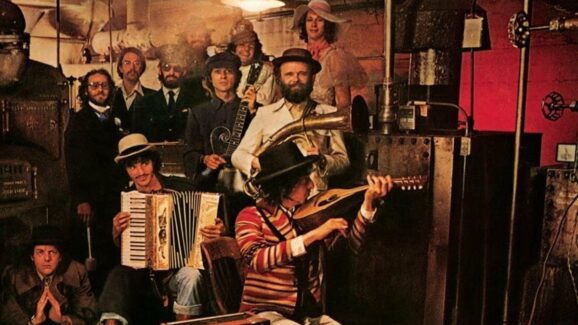Based in part on the resounding impact of Ragged Glory, Neil Young’s return to form with Crazy Horse in 1993 earned him the nickname ‘The Godfather of Grunge.’ So, while the iconoclastic Canadian’s collaboration(s) with genre icons Pearl Jam didn’t raise many eyebrows three decades ago, hindsight further suggests it was destiny calling.
A string of fortuitous encounters between Young and Pearl Jam led to recording at Heart co-founder Nancy Wilson’s Bad Animals studio in Seattle. With sessions produced by Brendan O’Brien–who had previously worked on Pearl Jam’s 1993 album, Vs., and a year later, Vitalogy–four days were sufficient to complete the album.
Young wrote all of the tracks for the record except for “Peace and Love”, which he co-wrote with Eddie Vedder. The Pearl Jam lead singer who was reportedly not present much at the sessions but did share vocals on the cut (he also wrote and sang “I Got Id” and “Long Road,” subsequently included on Pearl Jam’s Merkin Ball EP out this same year).
The logic of Mirror Ball‘s (released 6/27/95) running order may seem more than a little tenuous. But as the eleven numbers unfold, the album begins to resemble Young’s American Stars and Bars from 1977: after a series of high-volume excursions suffering from a bit too much spontaneity (like the country-folk numbers on the earlier record), the LP closes with emphatic authority, reaffirming the continuity of this 1995 title, based the bond between Neil and the younger musicians.
The quintet, composed of the former Buffalo Springfielder on guitar alongside Stone Gossard and Mike McCready, imbues “Throw Your Hatred Down” with a certain finality, that air driven home by the rudimentary rhythm section of bassist Jeff Ament and drummer Jack Irons.
The eight minutes plus of “Scenery” continues that ominous mood (and features O’Brien on piano), then leads immediately into the truncated “Fallen Angel;” Young is alone on pump organ there, quite likely a a reminder his previous studio release was Sleeps With Angels, homage to the late Kurt Cobain of Nirvana.
But even as the finale of Mirror Ball fleetingly hearkens to “On Broadway,” “Song X” is a little too reminiscent of traditional sea shanties like “Jack Tarr the Sailor” (arranged by Roger McGuinn for the latter-day Byrds on Ballad of Easy Rider). Likewise, “Act of Love” recalls more than one tune of Neil’s from later in his career (“Mansion on the Hill,” among others), suggesting some more forceful and objective guidance in the studio would’ve benefitted the resulting fifty-five plus minutes.
To that end, the muddy sound mix only partly camouflages the fact that there’s little extended improvisation on the LP, even during the seven minutes-plus “I’m The Ocean.” With its tight sequence of singing (not just caterwauling), alternated with concise instrumental segments, “Big Green Country” is a marked exception. As is “Downtown,” where Neil with Pearl Jam exhibits both the snap and swing of Young with Crazy Horse (though the aforementioned composition is not the late Danny Whitten’s for CH).
Mirror Ball thus doesn’t suffer from lack of enthusiasm–there was a short tour of Europe in support of the record–but perhaps some lack of attention to craft, not the first time the friend of CSN has erred in that direction. The passage of three decades, however, only heightens the unusual nature of this cross-generational collaboration.
Around this same time, the inveterate iconoclast’s stage and studio alliances with Booker T. & the M.G.’s struck a similarly exploratory tone. Yet Mirror Ball offers yet another instance of Neil Young’s longstanding relish for thrashing, compelling the temptation to become lost in what is, more often than not, a glorious din emanating from his union with Pearl Jam.








